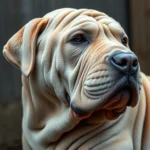
Introduction
Dog breeds play a significant role in our lives, not just as companions but also as working partners and loyal friends. Among the various breeds, the Artois Hound stands out due to its unique heritage and charming temperament. Originating from northern France, this breed has a rich history as a hunting dog, particularly known for its exceptional tracking abilities. In contemporary settings, the Artois Hound is not only valued for its skills but also cherished as a family pet.
The purpose of this article is to provide comprehensive insights into the Artois Hound, exploring its characteristics, care needs, training requirements, and how it compares to other dog breeds. Whether you’re considering adopting one or are simply interested in learning more, this guide will offer valuable information.
Understanding Dog Breeds
Dog breeds are defined by specific characteristics that distinguish them from one another. These traits can include temperament, size, and health, making certain breeds more suitable for different families and living situations. For instance, working breeds like the German Shepherd are often valued for their intelligence and trainability, while toy breeds like the Chihuahua are appreciated for their small size and companionship.
Understanding these breed characteristics is essential for potential dog owners. Popular classifications include:
- Working Breeds: Developed for tasks such as guarding and pulling sleds.
- Herding Breeds: Bred to help with livestock management.
- Toy Breeds: Small dogs kept primarily for companionship.
- Hound Breeds: Known for their tracking and hunting abilities.
The Artois Hound falls under the hound category, showcasing traits that have been honed for centuries.
The Artois Hound: An Overview
History and Origin
The Artois Hound has deep roots in the historical region of Artois, France. Initially bred for hunting game, this breed was recognized for its acute sense of smell and excellent stamina. The Artois Hound quickly became a favorite among hunters and noble families. Its lineage can be traced back to ancient hounds, and it shares similarities with other breeds like the Basset Hound and the Beagle.
Physical Characteristics
The Artois Hound is a medium-sized dog, typically weighing between 50 to 60 pounds. They stand about 18 to 22 inches tall at the shoulder. Their coat is short and can come in various colors, including white with orange or tan markings. One of the most distinctive features of the Artois Hound is its long, droopy ears that enhance its keen sense of smell.
Temperament
When it comes to temperament, the Artois Hound is known for being friendly, loyal, and affectionate. They are generally good with children and can coexist well with other pets if socialized early. This breed tends to be curious and clever, making them a joy to have around. However, their hunting instincts can lead them to chase smaller animals, so supervision is necessary in mixed pet households.
Care and Maintenance of the Artois Hound
Dietary Needs
Feeding your Artois Hound a balanced diet is crucial for their health and well-being. It is recommended to provide high-quality dog food that meets their nutritional needs. The daily food intake should be divided into two meals to avoid bloat, a condition that can affect deep-chested breeds. Always consult your veterinarian for specific recommendations based on your dog’s age, weight, and activity level.
Exercise Requirements
The Artois Hound is an active breed that requires regular exercise to maintain its physical and mental health. Daily walks, playtime in a secure yard, and engaging activities like fetch are essential. Given their hunting background, providing mental stimulation through scent games or puzzle toys can also help keep them happy and well-adjusted.
Grooming and Health Care
Grooming the Artois Hound is relatively straightforward due to their short coat. Regular brushing will help minimize shedding and keep their coat healthy. Health care is equally important; the Artois Hound may be predisposed to certain health issues, such as hip dysplasia and ear infections, particularly because of their floppy ears. Regular veterinary check-ups and vaccinations are vital for early detection of potential health problems.
Training the Artois Hound
Basic Training Techniques
Training your Artois Hound should start early, as they can be somewhat independent-minded. Basic commands such as sit, stay, and come are essential for establishing good behavior. Positive reinforcement methods, including treats and praise, work best with this breed. Socialization is also critical; exposing them to various environments, people, and other animals helps them develop into well-rounded adults.
Advanced Training Opportunities
For those seeking more than just basic obedience, the Artois Hound can excel in advanced training opportunities. Activities like agility training, obedience competitions, and even scent work can provide fulfilling challenges for both the dog and its owner. Some Artois Hounds may also be suitable for roles such as therapy or service dogs, thanks to their friendly nature.
Common Behavioral Issues
Like any breed, the Artois Hound may exhibit behavioral issues if not properly trained. Common problems include excessive barking, digging, or chasing smaller animals. Consistent training, combined with plenty of exercise and mental stimulation, can help mitigate these issues. If problems persist, consulting a professional dog trainer can provide tailored strategies for improvement.
Comparing the Artois Hound with Other Breeds
Similar Breeds
When comparing the Artois Hound with similar breeds, the Basset Hound and Beagle often come to mind. All three breeds share a strong hunting heritage and possess excellent olfactory abilities. However, the Artois Hound tends to be slightly larger and may have a more energetic disposition compared to its counterparts.
Differences in Temperament and Care Needs
While all three breeds are generally friendly and sociable, the Artois Hound is often noted for its loyalty and strong attachment to its family. This breed may require more exercise and mental stimulation than a typical Basset Hound, which is more laid-back. Understanding these differences can help potential owners make informed decisions based on their lifestyle and preferences.
Suitability for Different Lifestyles
The Artois Hound is versatile but thrives in environments that allow for physical activity and social interaction. Families living in urban settings with limited yard space may need to ensure they can provide sufficient exercise and engagement for their dog. Conversely, rural environments with ample space to roam and explore may suit the breed better. Additionally, the Artois Hound is generally good with children, making it a suitable choice for family dogs.
Adoption and Purchase Considerations
Where to Find an Artois Hound
If you’re considering adding an Artois Hound to your family, finding a reputable breeder or shelter is crucial. Reputable breeders will provide health clearances and a supportive environment for their puppies. Alternatively, adopting from a shelter can provide a loving home to a dog in need, and many shelters have breed-specific rescues that might have Artois Hounds available.
Cost of Ownership
The initial costs of acquiring a dog, including purchase price and vaccinations, can vary significantly. On average, the cost of a puppy from a reputable breeder may range from $1,000 to $2,500. Ongoing expenses such as food, grooming, vet visits, and supplies should also be factored into your budget. Generally, expect to allocate around $500 to $1,000 annually for the care of your Artois Hound.
Preparing Your Home for an Artois Hound
Before bringing an Artois Hound home, prepare your living space with the necessary supplies. Essential items include a comfortable bed, food and water bowls, quality dog food, toys for mental stimulation, and grooming tools. It’s also vital to create a safe environment by removing hazards and ensuring that your yard is secure, as this breed enjoys exploring.
Conclusion
The Artois Hound is a remarkable breed that brings unique qualities to the table, from its fascinating history to its loving temperament. Understanding the needs and characteristics of the Artois Hound is essential for anyone considering this breed as a companion. With proper care, training, and a commitment to meeting their needs, owning an Artois Hound can be a rewarding experience that enriches the lives of both the dog and its family. As with any breed, it is crucial to assess your lifestyle and ensure that an Artois Hound is a suitable fit for you and your household.




